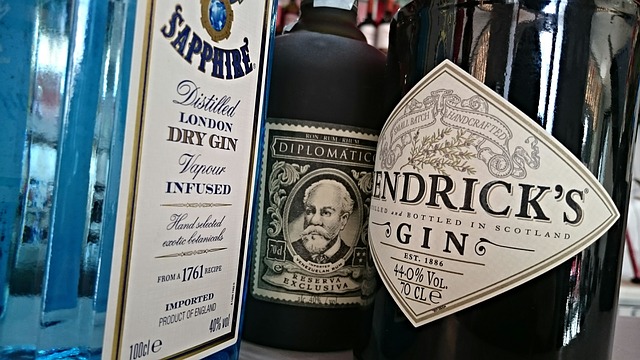
Gin is one of the most sophisticated, complex flavoured spirits on the planet. It is more than just a distillate which is imbued with juniper berry. The growth in this product has been staggering as it no longer attached to the social mores that characterised it so long ago. If you look on the grocery shelves you are confronted with a vast array of products. It’s difficult to decide what to choose but we have been examining some of the best available.
The History Of Gin
Gin has probably been with us since the Middle Ages in Europe but it became part of the nation’s heritage from the 1700s onwards. It started life as jenever which means juniper before its more modern origin which is accredited to the 17th century Dutch professor, Franciscus de la Boe. He distilled a mixture of fermented rye with juniper berries to produce “Essence de Geniévre” which was marketed unbelievably as a medicine. Chemists sold it to treat intestinal and stomach complaints, gallstones and gout.
William of Orange (William III) is said to have brought the drink with him on his taking the throne of Britain and the taste has stayed ever since. The French word ‘genievre became contracted to ‘gin’ in English. Gin palaces developed in the major urban centres of the 18th Century such as London, Bristol, Portsmouth, Plymouth and Leeds. Gin was considered part of your wage and was paid to British troops engaged in the Thirty Years war in the Low Countries (Belgium and Holland). The phrase ‘Dutch Courage’ comes from the time when gin could help warm soldiers exposed to the damp of the countryside.
Gin gained a terrible reputation as a social menace as the Industrial Revolution raced into the 19th Century and Hogarth’s day. This painter of London street life probably produced the most famous temperance painting ever. The scene of London with women dropping their babies because of inebriation lead to the phrase Mother’s Ruin. The 1739 legislation, The Gin Act raised the price to a ridiculously high level which made it unaffordable but the Prime Minister of that day Sir Robert Walpole opposed it on the grounds that it was against the will of the people.
In 1742, the Gin Act was repealed with 11 million gallons produced in London alone. By 1820, gin was called Mother’s Milk but the image of Mother’s Ruin would not go away. The Prime Minister, William Gladstone, in the mid 1800s tried to pass a bill in Victorian days which would ban Gin Palaces. Like his Home Rule Bills for Ireland, the House of Commons voted against the bill and gin became an accepted part of the UK’s drinking culture. Incidentally, cocktails using gin were developed by Cunard Cruise Lines for passengers who needed to while the time away between high tea and dinner. We’ve clearly not lost our taste for them. A G&T is now the most popular pre-dinner drink.
Gin is prepared by distilling a range of fermented grains and malted barley, rye and maize or corn are the most common, producing a spirit base. The alcohol content is about 40 to 48% proof and forms a light-bodied spirit. Generally, mixtures of grains are now used to generate the correct balance of flavour. Unlike a liqueur where the additional ingredients are added after distillation, the flavours come from other ingredients which are added as part of the base mix. The botanical selection of various plants is important in creating some of the unique gin flavours. These include coriander seeds, calamus root, angelica root amongst others. Most recipes are secret so only a sensory panel can really define some of these flavours adequately.
Flavours Of Gin
The main components are the monoterpenes which reflects the typical characteristics of juniper berries. Further oxygenated monoterpenes are formed on storage but it is not a stored product whose flavour dramatically changes with age.
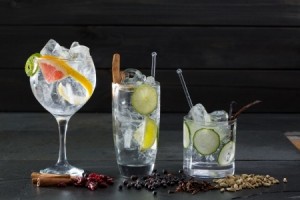
There are two basic types – London Dry Gin (LDG) and Dutch Gin (Geneva).
London Gin is perhaps the more popular of the two and does not actually refer to its location but method of manufacture and production. The reference to ‘dry’ means the flavour level is low and is produced by distillation of neutral spirit with various botanicals which contain high oil levels. Juniper is the most popular flavour to add. The ratio of volume of spirit to weight of botanicals determines the overall flavour level in the distilled gin. The distillation can take any amount of time but a minimum of two hours is enough although records suggested that up to 15 hours was possible. There is probably considerable flavour modification throughout the process.
Dutch Gin has a flavour persisting of almonds but is produced similarly to London Gin. The Dutch use equal quantities of barley, rye and corn. The Pot still method of distillation characterises this spirit’s manufacture.
Regulations Concerning Gin
The EU defines the alcohol content as the minimum bottled alcoholic strength for gin, distilled gin, and London gin set at 37.5% ABV.
In the United States, gin is defined as an alcoholic beverage of no less than 40% ABV (80 proof) that possesses the characteristic flavour of juniper berries. Gin produced only through distillation or redistillation of aromatics with an alcoholic wash can be further distinguished and marketed as “distilled gin”.
Cocktails Using Gin
Gin is nowadays a sophisticated drink which is served with tonic water or in some case ginger ale to dilute the flavour impact but allow the base notes to settle. A slice of lemon or lime usually adds enough acidity and it is all then poured over ice (on the rocks). Most bottle volumes are 70cl.
Products
The United Kingdom is a rich source of new products to try in this category. We actually start with Brecon Special Reserve (Manufacturer: Penderyn Distillery) from Wales. This particular one was awarded “Gold Best in Class” in the Worldwide Gin 40% category at the International Wines & Spirits Competition 2011. It has a clean taste with a distinctive aroma generated by a pleasing array of botanicals from juniper berry, coriander seed, angelica seed, coriander seed, orange peel and orris root amongst others.
Beefeater is a very famous name in gin. One of the newest is their Pink Strawberry Flavoured Gin. This was created by Desmond Payne, who is an extremely experienced Master Distiller. The flavour is natural strawberry, with citrus and classic juniper botanicals, to create a delicate and refreshing strawberry flavoured spirit. These are all soft flavours which help counter the more classic bitter notes from juniper and citrus. This is a good one for pouring over ice with tonic, garnished with a handful of strawberries. Buy now from Amazon.
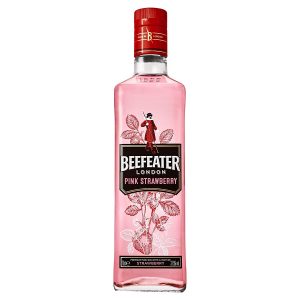
Hendrick’s Gin (Manufacturer: The Girvan Distillery, Girvan) is a famous Scottish name in a distinctive dark green bottle which is produced in 450 litre batches at a time. Its flavours, whilst many and varied are infused with two signature botanicals based on rose petal and cucumber. Bulgarian Rosa Damascena and specially selected cucumbers give it a floral and perfumed aroma. It was awarded the Silver medal at the International Wine and Spirit Competition (2010) and more recently the Bronze Medal – International Wine & Spirits Competition (2015). It is recommended that tonic water and slice of cucumber garnish provide the ‘coup de grace’ to this perfumed delight.
Ableforth’s Bathtub Gin is claimed to be “bold, clean and fresh with notes of juniper, fresh citrus peels, cardamom, cinnamon and clove”. The flavours which are typical of gin are generated using a traditional cold compounding technique of infusing to bring out the quality of the aromas. It has won a host of awards in recent years – 2016 Double Gold Medal Winner & Best of Show – Wine & Spirits Wholesalers of America, 2015 Gold Medal Winner – International Wine & Spirits Competition, 2014 World’s Best Compound Gin – World Gin Awards, 2013 Trophy – International Spirits Challenge, 2012 Best Design & Packaging Spirit – Drinks Business Awards. Quite an array !
A particularly interesting gin from north of Hadrian’s Wall is Brockmans. This spirit demands seven to eight hours of distillation with only a certain select fraction being taken to make it to the bottle. It claims to be produced from a high quality neutral grain spirit. Infusion with 10 botanicals (Juniper, Coriander, Blackberries, Blueberries, Orris Root, Cassia Bark, Liquorice, Orange & Lemon, Angelica root, and Almonds) means a complex aroma and flavour.
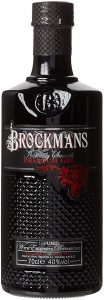
Warner Edwards Distillery Victoria’s Rhubarb Gin is an interesting spirit at 40% proof. This focusses on rhubarb flavour for its complex profile. It was the 2015 Silver Medal Winner – International Wine & Spirits Competition.
If you are looking for gin from Europe then Monkey 47 Dry Gin (Manufacturer: Schwarzwald) which hails from the Black Forest in Germany might be worth a punt. It exploits 47 botamicals in its Flavour profile and was awarded the 2011 World Spirits Award Gold for Gin.
Gordons
A famous, classic and iconic brand is Gordons which now has 33% of the UK gin market and enjoys considerable popularity globally too. The dry gin has been distilled since 1769 to a secret recipe of Alexander Gordon and now known only by the chief distiller and some of the Board Directors. It has a flavour profile of citrus and herbs with spices which lends a distinctive crispness and fragrancy.
Tanqueray
Also take the time to look out for Tanqueray which is now distilled by Diageo Plc. in Campbeltown, Scotland.
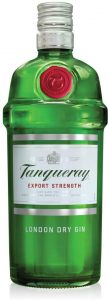
The most famous type from this brand is their London Dry. The original was devised by Charles Tanqueray way back in 1830. You will find a balance of peppery coriander on top of the classic juniper flavour. You can also taste some angelica and is that liquorice we detect too. This has to be distilled four times to achieve that particular classic flavour coupled with a clean and smooth finish.
The bottle is also an intriguing shape resembling a three-part cocktail shaker.
Tanqueray No. Ten is a great example which originally came from Brazil and has an ABV of 41.1%. It’s only made in small batches and is produced from the eponymous No. 10 still.

The bottle is probably one of the most distinctive around. It comes in a classic Art Deco style with a distinctive red waxy seal that signifies the Tanqueray name. Makes for a great gift too. As a gin it is best served with ice, tonic water and a slice of lime or grapefruit. Cocktails should also be a good vehicle to show off its credentials. The botanicals are drawn from fresh citrus fruits, some chamomile flowers, juniper, coriander, angelica, and licorice. Buy now from Amazon.
Now what about Tanqueray Flor de Sevilla which is product with what the makers describe is the perfect balance of fresh citrus fruits bursting forth especially Seville Oranges. It has been awarded the silver medal winner in the San Francisco World Spirits Competition back in 2018. The product was inspired by Charles Tanqueray’s recipes using the ripening oranges of the trees of sun-drenched Sevilla. This has resulted in a balance spirit of bittersweet orange with the complexity of Tanqueray London Dry Gin. The botanicals are refreshing juniper, peppery coriander, angelica & liquorice. The secret it is said lies in the uniquely bittersweet and zesty taste. The ABV is 41.4%. Buy from Amazon now.
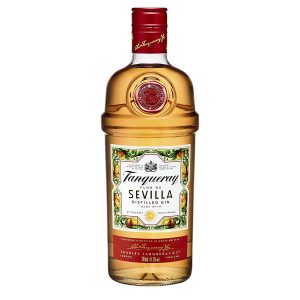
Whitley & Neill
Whitley & Neill have created a range of fruit flavoured gins over a number of years and they keep on surprising everyone with their ingenuity.
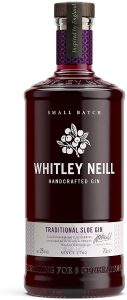 This distiller has been producing gin of all sorts since 1762 and they are noted craftsmen of the genre. One of the standouts is their very Traditional Sloe Gin (28%ABV). Sloes are one of those extremely tart fruits which lends itself so well to gin. Not only can you make it at home but it is also one of the classic flavours in bottled commercial gins. Whitley & Neill’s sloe gin captures that essence which could transport you back to a snowy London street in Queen Victoria’s time. (Buy from Amazon).
This distiller has been producing gin of all sorts since 1762 and they are noted craftsmen of the genre. One of the standouts is their very Traditional Sloe Gin (28%ABV). Sloes are one of those extremely tart fruits which lends itself so well to gin. Not only can you make it at home but it is also one of the classic flavours in bottled commercial gins. Whitley & Neill’s sloe gin captures that essence which could transport you back to a snowy London street in Queen Victoria’s time. (Buy from Amazon).
One of their cocktail suggestions is to take 50ml of their Sloe Gin, add 200ml of a high quality lemonade and then garnish with raspberries and some mint sprigs.
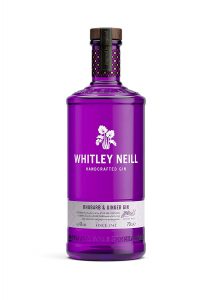 |
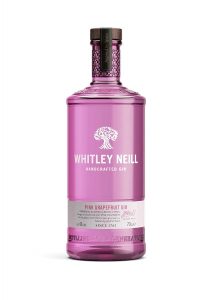 |
Rhubarb & Ginger gin (see the purple bottle) has the essence of rhubarb which adds a tart crisp edge to a smooth English gin base whilst the ginger extract warms the palate for a full-bodied finish. The ABV is 43%. Ideal when served neat over ice or mixed with cloudy apple juice, and garnished with ginger and rosemary. Buy now from Amazon.
The Whitley Neill Pink Grapefruit variation has a delicate sweetness and plenty of citrus notes before giving way to a grapfruit finish. All these aromas are from Spain and were inspired by the citrus groves. Best served in a large balloon glass filled with cubed ice. Top with 100ml premium tonic water, stir well and garnish with a grapefruit slice. The botanicals are Juniper Berries, Coriander Seed, Cassia Bark, Orris Root, Angelica Root, Liquorice Root, Sweet Orange, Lemon Peel, Pink Grapefruit, Lime Flowers, Balm Herb, Cloves and Chamomile. The ABV is 43%. Buy now from Amazon.
Langley’s Number 8 is the one for a good old fashioned G&T. The number 8 refers to the number of botanicals within this unctuous spirit. This has one a host of accolades and should really be better known. It is prepared from 100% English grain spirit which gives it an especially silky and smooth feel. The whole is well-balanced and sophisticated with no particular flavour overcoming the other. Langley suggest a good old fashioned tonic water is used with a wedge of pink grapefruit, some basil and the odd juniper berry to really give it some old-fashioned glamour. It was the Gold Medal winner in the San Francisco World Spirits Competition 2014 so it has true class. the ABV is 41.7%. Buy now from Amazon.
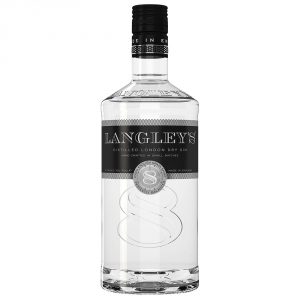
The rest of Europe is also catching up on the idea. One of the top products comes from the Torino Distillati in Moncalieri in Italy. They have a Rose Pink Grapefruit Italian gin which is distilled from Italian grain spirit, Juniper, Coriander, Italian Pink Grapefruit, Rhubarb and 4 further botanicals. It has an ABV of 41%. All these botanicals are infused in the grain spirit for up to 36 hours where its distinctive orange hue appears. The whole is distilled for 5 hours in stainless steel vats. Buy now from Amazon.
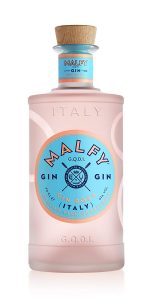
Now then, there is a gin that with a flavour that matches its pale sky blue tint and that is Silent Pool (43% Alc. by vol.). This one comes with a superbly flavoured concoction of honey with lavender and chamomile. Produced on the Albury Estate in the Surrey hills. 
Liqueurs
If you are interested in the liqueurs then Scotland’s capital city offers Edinburgh Gin Rhubarb and Ginger Liqueur (50cl; 20% alcohol content) which might just be your tipple. This is a product with an intense rhubarb aroma and an arresting but warming ginger spiciness and warmth in the aftertaste. The colour is a soft pinky rose. The makers recommend it with tonic, soda or lemonade. Create special cocktails, serve with champagne or pour over ice rocks. The makers, the Edinburgh Gin Distillery (part of Spencerfield Spirit Co.) reside in the West End which is a bustling district of this old city. Buy now from Amazon.

So we have looked at various products. Just try a few to discover the right one for you. Who knows it might just get you off rum !
Please note this page contains links to our affiliate marketing partners and we are an Amazon Associate. Please read our affiliate disclosure. Just click on the individual products to link to the Amazon site.
Revised 8th December 2020 – new gin additions and removal of some of the older packaging.

Just checking on your gin piece here. I just put a comment on your item about the Juniper Berry because of the work being done in the UK to save the Juniper berry. What I did see was The Gin Journey which has come to Bermondsey on London Apparently they take you round London to visit the many wonderful gin making places. It’s a four-and-a-half hour trail according to the brochure which has five stops at London’s hottest gin making sites, including the Victory Gin Micro Distillery and Jensen’s Gin Distillery. You get to taste five different gins and just in case you get thirsty, five more cocktails. I’m really keen to promote this stuff as this is where I think the UK smashes it. I did a trip on it years ago but in Liverpool and it was great then. You don’t get boozed up either. The trip is going to be every Saturday from 2pm – 6.30pm- “for the foreseeable future.” Tickets are £70. I’m actively promoting anything gin related but this looked such a good idea as a present.
Tanquery has a nice, strong and really amazingly dry flavour to it. I don’t think you can really go wrong with this particular gin. Quite like your article and I hope you write some more specific items on various gins as they fit with the web-site.
Hey have you tried Whitley’s gin yet. Oh my what a beautiful drink. This was bought for me by my husband and I tried it in London on a weekend break. It has the right amount of rhubarb without being overpowering. I love the bottle shape and all. There is a slight whiff in the bottle on first opening but that must be the strength of the product. Is really my favourite at the moment. Needs a slice of lime rather than lemon to just finish it all off. Look out for the ginger notes as well. It does have some good reviews from those on Amazon and is their number 1 purchase. Wasn’t disappointed at all.